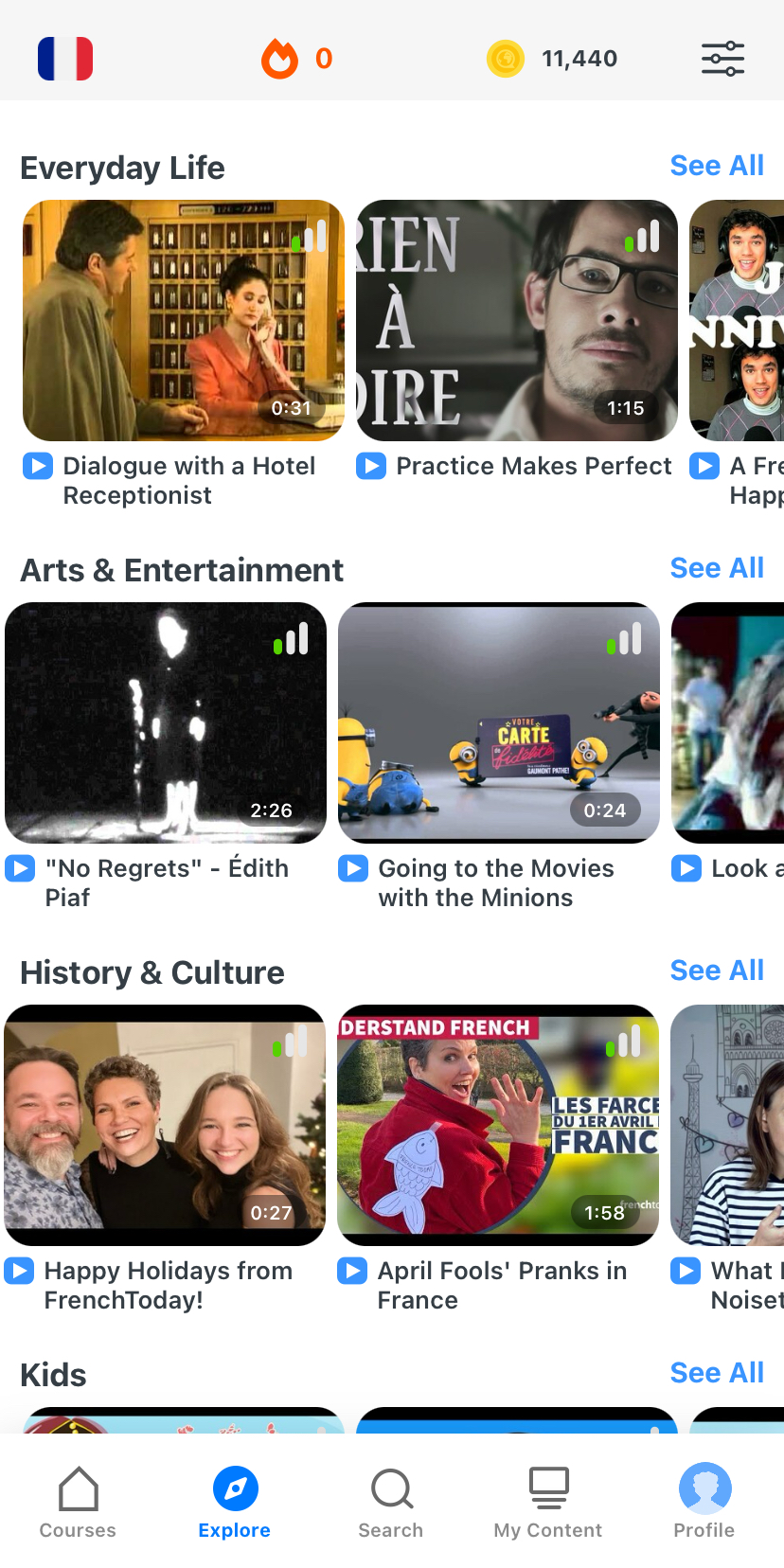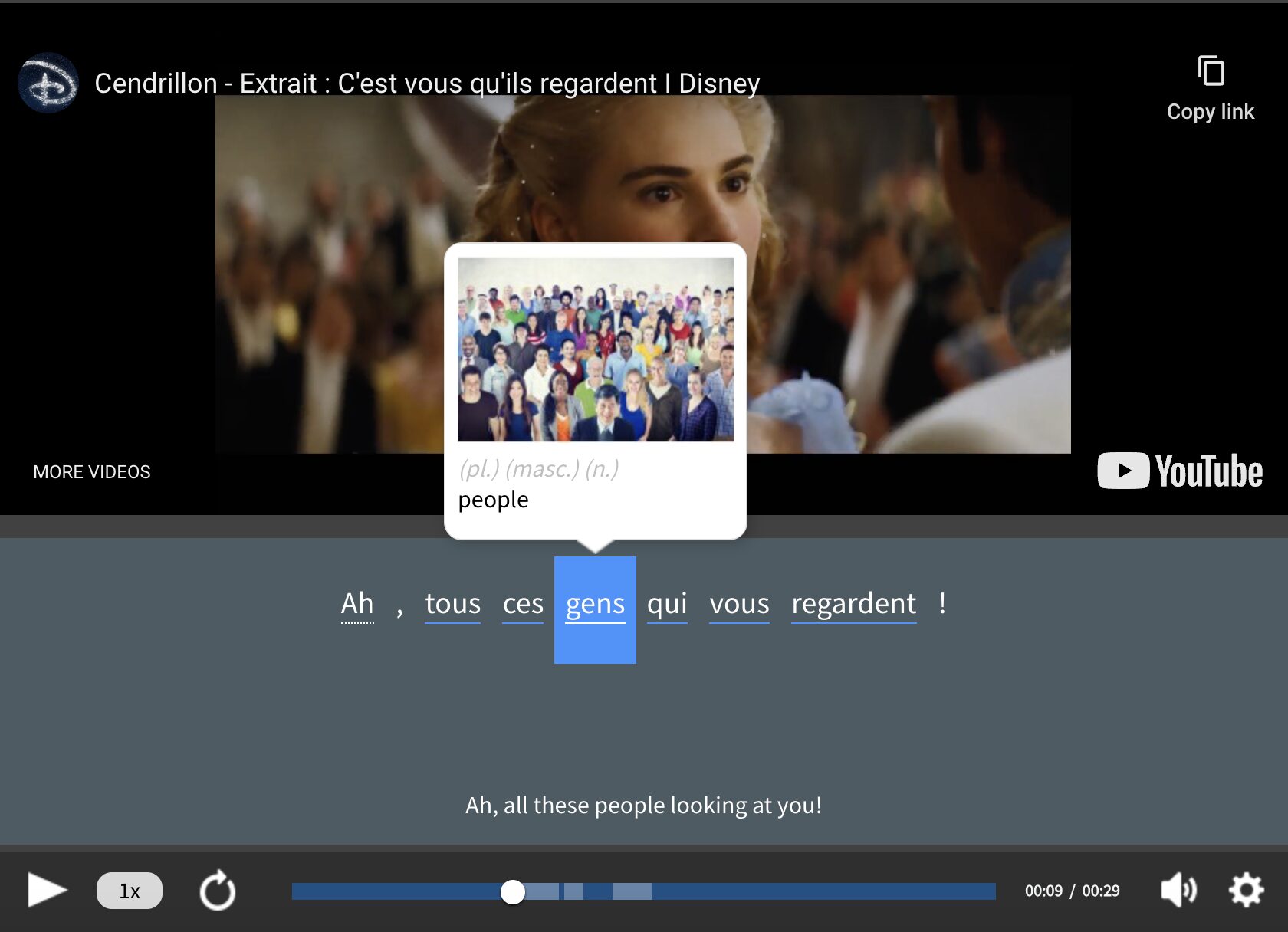French Vowels: The Complete Guide to the 15 Vowel Sounds

The French vowels are a, e, i, o, u and y. But there are way more French vowel sounds than there are vowels.
Below I’ll cover how the vowels are formed in your mouth, along with examples, so you can master the French letters and spellings that produce them. Then, we’ll look at ways to practice pronouncing them correctly, so you can sound as French as possible.
Download: This blog post is available as a convenient and portable PDF that you can take anywhere. Click here to get a copy. (Download)
What Are the French Vowel Sounds?
Simply put, a vowel is what happens when you’re making a sound without constricting it in some way in your mouth or throat. You’re making a consonant when you constrict the airflow (by closing your tongue against your teeth, for example).
Vowels are the base of syllables, and how you position your lips and tongue while making them affects how they sound.
Standard French has about 13-15 vowel sounds, depending on exactly how you count—what everyone can agree on is that this is a language with a lot of them. They’re not necessarily easy for English speakers to master. But they’re possible.
Close vowels are referred to by some experts as high vowels, and open vowels are sometimes referred to as low vowels. This is just a matter of using different words for the same thing; I’ll use the terms “close” and “open” throughout. Close vowels mean that your tongue is higher, closing off the space inside your mouth more. Open vowels indicate the opposite.
We also talk about vowel backness and frontness, or how far your tongue is when making vowels to the front and back.
And, finally, we have rounded or unrounded vowels, which refers to what you’re doing with your lips. In the land of French vowels, you will round them a lot more than in English.
This post is organized by vowel sound and will use the IPA (International Phonetic Alphabet) symbols, which are the letters used to indicate pronunciation in most good dictionaries with complete and helpful features.
The English examples are from standard American English, and may not apply to all accents.
Note that in English, we unconsciously make many of our vowels into diphthongs (or a combination of two vowels), as in this video, which shows the [e] and [eI].
So when pronouncing [e] in French (explained below), try to get a clean, true, single vowel sound.
Close Vowels in French
/i/ in vie
This is known as the frontal close unrounded vowel, and it’s not too difficult for English speakers. It’s like the “ee” in the English word “knee.”
Examples:
ici (here)
vie (life)
rire (laugh)
/u/ in fou
This is similar to the vowel in “boot,” but more rounded. Try saying that vowel, but with your lips in a tight circle. The resulting sound might not seem too different to you, but if you do your /u/s this way, you’ll sound much more French.
Examples:
fou (crazy)
sous (under)
vous (you)
/y/ in su
I’ve previously written an entire post about what a nightmare this frontal close rounded vowel is, and an in-depth guide to conquering it. To many English speakers, it sounds like /u/ above; if this is the case for you, definitely click on that link for the dedicated article.
In terms of pronunciation, this sound is differentiated from /u/ by moving the tongue up to the front. If you have a perfect sous in the previous example, try “freezing” your mouth in that position and then moving your tongue forward. The result should be the vowel sound in:
su (known, past participle of savoir).
Another way to get there is to travel from another close vowel in this section, /i/.
What’s the difference?
Mainly, it’s the rounding of the lips, so try saying lit (bed) and then keeping your mouth the same (perhaps the tongue just a bit further back) and rounding your lips to get lu (read, past participle of lire).
Examples:
su (known, past participle of savoir)
lu (read)
tu (you)
Close-mid Vowels in French
/e/ in nez
The close-mid frontal unrounded vowel is like /i/ but a bit more open, like the vowel in “play,” but be careful not to make a diphthong of it when speaking French.
Examples:
nez (nose)
parler (to speak)
avez (have)
/ø/ in peu
This is the rounded twin of the /e/ above. As was the case with /y/, we don’t have this close-mid frontal rounded vowel in American English, so we have to learn it.
Again, the easiest way is approaching it from the /e/ that we know, rounding our lips and letting the tongue relax just a tiny bit.
Examples:
nœud (knot)
peu (little)
deux (two)
/o/ in sot
This close-mid back vowel is similar to our “o,” as in “so,” but without the diphthong that we unconsciously add. Therefore, the French sot (stupid) sounds the same, but shorter and cleaner.
Examples:
sot (stupid)
moto (motorbike)
chose (thing)
Open-mid Vowels in French
/ɛ/ in crêpe
The open-mid front unrounded vowel is the vowel in “bed” for Americans. You use it in French when you ask for a delicious crêpe or cèpe (cep, a type of mushroom).
Examples:
crêpe (crepe)
cèpe (a type of mushroom)
neige (snow)
/œ/ in œuf
The open-mid front rounded vowel is, like /ø/ and /y/, unfamiliar to American English speakers. It can be achieved by taking the /ɛ/ above and pronouncing it with rounded lips.
Examples:
jeune (young)
œuf (egg)
feuille (sheet)
The difference between /œ/ and /ø/ is that the tongue is a little bit lower for /œ/. You’ll also notice that both vowels tend to be spelled the same way in French: eu and œu.
In these cases, you should pronounce /œ/ (somewhat lower tongue) when the syllable ends in a consonant and /ø/ when it doesn’t. Try comparing peu and peur (fear).
/ə/ in rappeler
The schwa or dropped e is a mid-central, somewhat rounded vowel. Some consider it identical to /œ/ above, when it’s actually pronounced.
It also tends to drop out of words, as heard in rappeler (to remind), where /ʁapəle/ sometimes becomes /ʁaple/.
Examples:
rappeler (to remind)
je (I)
/ɔ/ in note
This open-mid back rounded vowel is as in the word “thought,” but with the tongue further forward and the lips rounded.
Examples:
note (note)
sol (ground)
homme (male)
Open or Low Vowels in French
/a/ in là-bas
This is like the American English “father” but with your tongue just a bit higher and further forward.
Examples:
là-bas (over there)
maladie (illness)
ami (friend)
Nasal Vowels in French
/ã/, /ɛ̃/, /œ̃/ and /ɔ̃/
The nasal vowels are cousins to a few of the vowels above that are pronounced by taking those vowels and putting them up your nose. It seems like a hilarious thing to do, and it is:
It’s also not a particularly hard vowel sound to achieve. Just remember, when you see syllables that close with an m or an n (and that are not followed immediately by a mute e), you do not pronounce the m or n, you rather nasalize the vowel.
In IPA, they’re indicated like their vowel cousins, but with a tilde ( ˜ ) on top. We thus have words like:
champ (field)
fin (end)
bon (good)
humble (humble)
How to Practice French Vowels
- Watch French pronunciation videos. For a more technical demonstration of the French vowels, this video from Gabriel Wyner really merits watching (you may need to watch it several times in order to follow it though). For minimal pairs, there is a series of videos on YouTube covering many, as well as some tricky consonants.
- Use an audio course. Learning the correct pronunciation for vocabulary right away is always good practice, so consider using an audio course if you aren’t already. French Today offers some great targeted audiobooks for beginner and intermediate levels, with hours of audio that can be played back at two different speeds.
- Get feedback from native speakers. You can find (often cheap) lessons over Skype with a native speaker who can give you constant feedback about how close you are to saying sentences correctly. Italki is one good place for finding such teachers, and we have an article about similarly useful language exchanges.
- Prioritize pronunciation in your lessons. Before meeting with your teacher or language exchange partner, you can work independently and create sentences that relate to your life using the example words in this article. Then check with your teacher. I’ve found it useful to have teachers indicate if I’m getting closer to or further from the target—often they have a tendency to repeat the word back to me, which is good to hear, but not useful for knowing if I’m getting close or not.
You’ll want to return to vowel pronunciation constantly as you continue in your language adventures to ensure you’re still pronouncing words correctly as you try to minimize your accent.
But the work is worth it.
Capture these vowels, and you’ll not just be communicating. You’ll sound quite nearly French.
Download: This blog post is available as a convenient and portable PDF that you can take anywhere. Click here to get a copy. (Download)
And One More Thing...
If you like learning French at your own pace and from the comfort of your device, I have to tell you about FluentU.
FluentU makes it easier (and way more fun) to learn French by making real content like movies and series accessible to learners. You can check out FluentU's curated video library, or bring our learning tools directly to Netflix or YouTube with the FluentU Chrome extension.
One of the features I find most helpful is the interactive captions—you can tap on any word to see its meaning, an image, pronunciation, and other examples from different contexts. It’s a great way to pick up French vocab without having to pause and look things up separately.
FluentU also helps reinforce what you’ve learned with personalized quizzes. You can swipe through extra examples and complete engaging exercises that adapt to your progress. You'll get extra practice with the words you find more challenging and even be reminded you when it’s time to review!
You can use FluentU on your computer, tablet, or phone with our app for Apple or Android devices. Click here to take advantage of our current sale! (Expires at the end of this month.)










